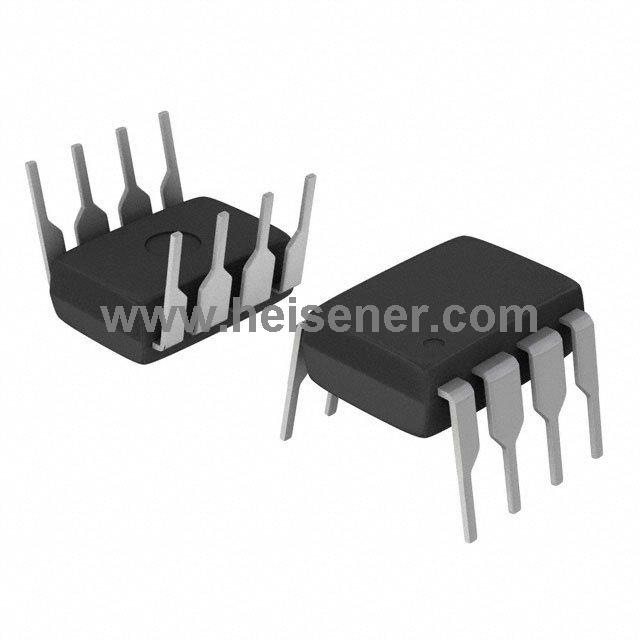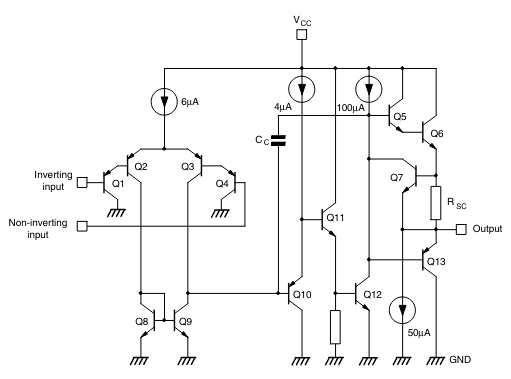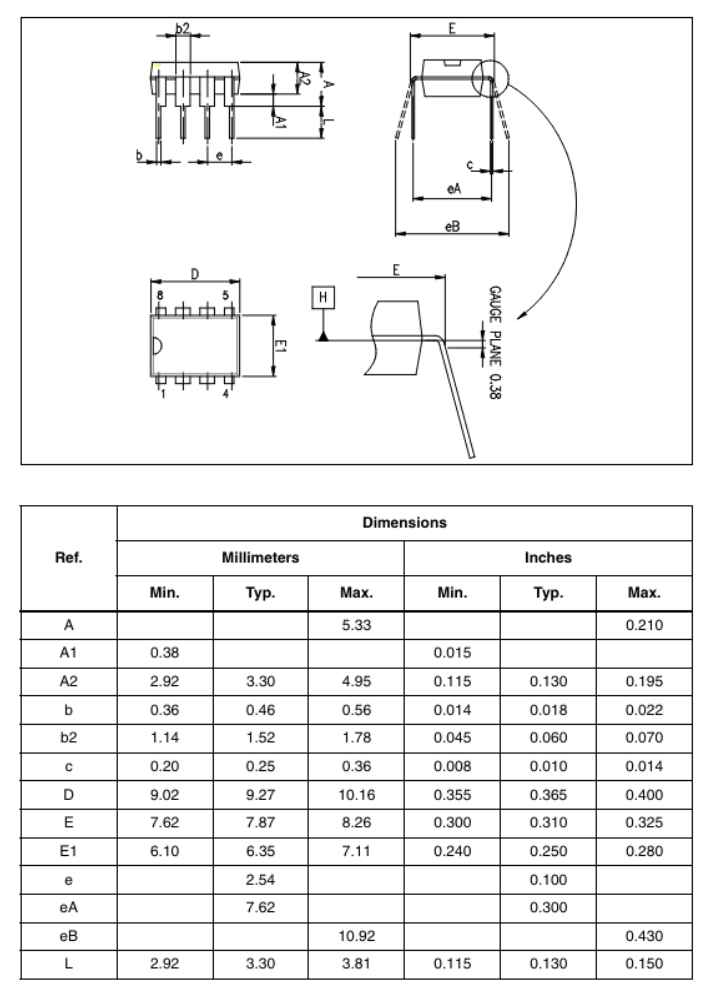
LM358N Definition
The LM358N is a low-power dual operational amplifier (op-amp) . It is part of the LM358 series, which includes two independent, high-gain, internally frequency-compensated op-amps in a single package. The LM358N operates from a single power supply over a wide range of voltages, making it suitable for various analog signal processing tasks, such as amplification, filtering, and mathematical operations.
LM358N Working Principle
The LM358N operates as a dual operational amplifier with two independent op-amps in a single package, which can amplify the voltage difference between the inverting and non-inverting inputs. It uses differential input transistors to convert the voltage difference into a differential current, which is then amplified by the internal gain stages. The output stage provides a buffered output voltage that corresponds to the amplified difference between the input voltages.
LM358N Pinout

LM358N CAD Models


LM358N Schematic Diagram

LM358N Specifications
| Specification | Value |
| Number of Channels | 2 (Dual Op-Amps) |
| Voltage - Supply, Single/Dual (±) | 3V~30V ±1.5V~15V |
| Max Input Voltage | 28.5V |
| Nominal Supply Current | 1.2mA |
| Output Current | 60mA |
| Operating Supply Current | 700μA |
| Operating Supply Voltage | 15V |
| Large Signal Voltage Gain | 100 dB |
| Bandwidth (Unity Gain) | 1.1 MHz |
| Slew Rate | 0.6 V/µs |
| Quiescent Current | 0.7 mA per amplifier |
| Operating Temperature Range | 0°C - 70°C |
| Package Types | 8-DIP (0.300", 7.62mm) |
LM358N Features
The LM358N contains two independent, high-gain operational amplifiers in a single package
It operates from a single power supply voltage range of 3V to 32V
Each amplifier consumes only 0.7 mA, making it energy-efficient
Offers a large signal voltage gain of 100 dB
Provides a typical unity gain bandwidth of 1 MHz
The input offset voltage is typically 2 mV
A typical input bias current of 45 nA
It includes internal frequency compensation
The input voltage range extends from 0V to Vcc - 1.5V
LM358N Applications
Signal Amplification
Active Filters
Voltage Follower (Buffer)
Comparators
Oscillators
Integrator and Differentiator Circuits
Summing Amplifiers
Analog-to-Digital Converters (ADC) Interfaces
Current-to-Voltage Converters
Battery-Powered Devices
LM358N Package

LM358N Equivalents
LM2904:
The LM2904 is a dual operational amplifier similar to the LM358N but with an extended operating temperature range from -40°C to +125°C.
LM158:
The LM158 is another dual operational amplifier that matches the LM358N in terms of electrical characteristics. It generally applied to military and aerospace applications due to its wider temperature range from -55°C to +125°C and higher reliability.
LM258:
The LM258 is essentially an industrial-grade version of the LM358N, offering similar performance but with an operating temperature range from -25°C to +85°C.
LM2409:
The LM2409 is a specialized version that also matches the LM358N in terms of function and specifications. It typically features enhancements for specific industrial or automotive requirements.
LM324:
The LM324 is a quad operational amplifier, meaning it includes four independent op-amps in a single package, unlike the LM358N, which has two. It offers similar electrical characteristics.
How to Use LM358N?
The LM358N has an 8-pin dual in-line package (DIP) or surface-mount package, with two independent op-amps. Each op-amp has an inverting input, a non-inverting input, and an output. The power supply pins are connected to a single or dual power source, with Vcc (positive supply) and GND (ground) or Vee (negative supply).
To use the LM358N, first connect the power supply. For a single supply operation, connect the positive voltage to Vcc (pin 8) and ground to Vee (pin 4). For a dual supply, connect the positive voltage to Vcc, the negative voltage to Vee, and the ground to the common ground.
Next, connect the inputs and outputs based on your circuit requirements. For instance, in a basic voltage follower (buffer) configuration, connect the input signal to the non-inverting input (pin 3 for the first op-amp), connect the inverting input (pin 2 for the first op-amp) to the output (pin 1 for the first op-amp), and take the output signal from pin 1.
FAQs
What is the difference between LM358 and LM358N?
The LM358 and LM358N are essentially the same in terms of functionality and performance. The "N" suffix usually denotes the package type, which in this case is the standard dual in-line package (DIP).
Can the LM358N be used for audio applications?
Yes, the LM358N can be used for audio applications, although for high-fidelity audio applications, low-noise op-amps like the NE5532 or OPA2134 might be preferred.
What is the slew rate of LM358N?
The typical slew rate of the LM358N is 0.3 V/µs, which defines how quickly the output can change in response to input changes.
What precautions should be taken when designing with the LM358N?
The input voltage should stay within the specified range, avoid excessive capacitive loads on the output to prevent oscillations, and use proper power supply decoupling.